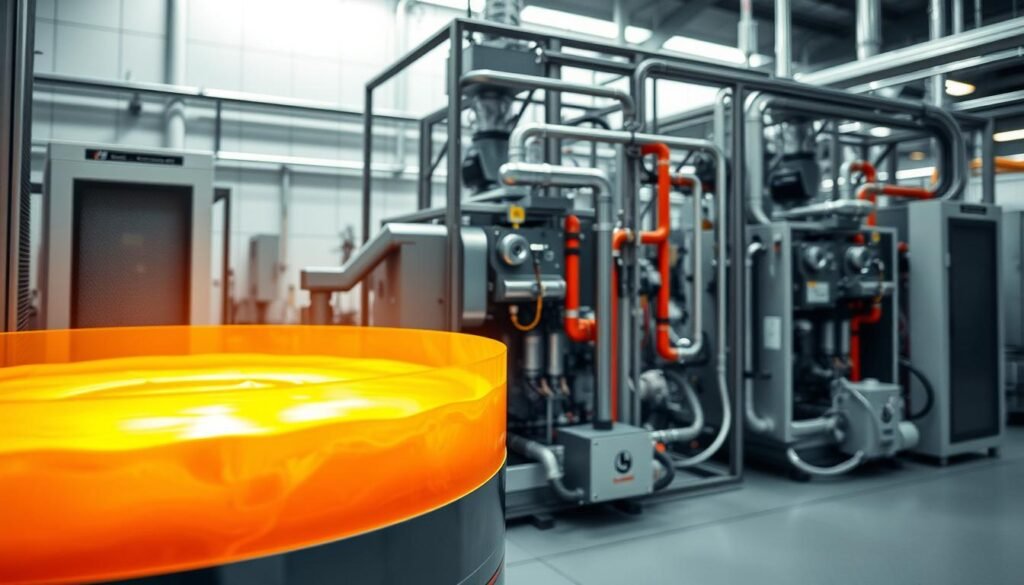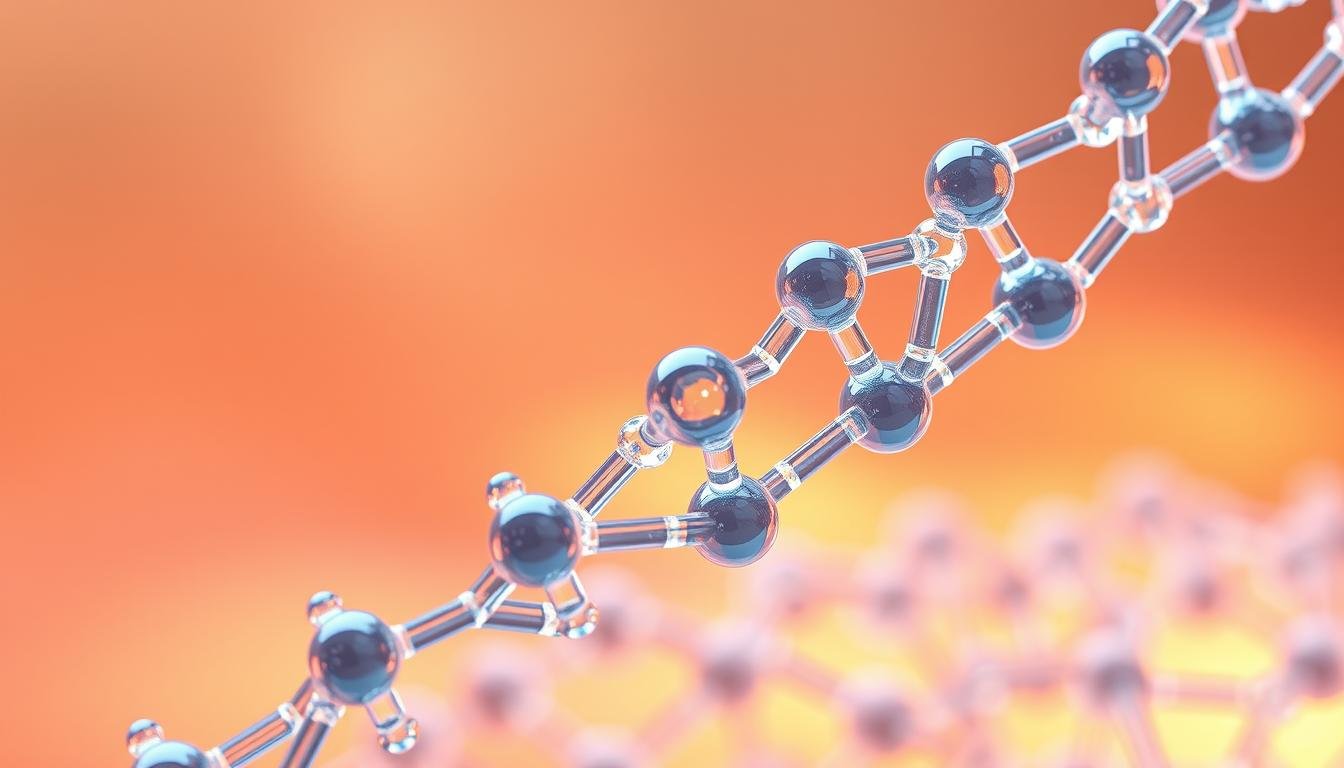Engineers and manufacturers rely on synthetic polymers for countless applications. Among these materials, those with amide-based structures offer unique advantages in durability and flexibility. This article focuses on their ability to withstand high temperatures—a critical factor in industrial design and production.
Thermal thresholds determine how these versatile polymers behave during molding, extrusion, or machining processes. Specific variants demonstrate distinct heat resistance levels, directly affecting their suitability for automotive components, electrical insulation, or consumer goods. For example, common grades like Type 6 and Type 6/6 exhibit temperature tolerances differing by over 40°C.
Material scientists emphasize the connection between molecular arrangement and performance under stress. Chains with tighter crystalline structures typically handle higher energy inputs before transitioning phases. This knowledge helps professionals select the optimal polymer grade for environments involving friction, repeated heating cycles, or chemical exposure.
By analyzing these thermal characteristics, industries can reduce waste and improve product longevity. The following sections break down key technical details to guide effective decision-making in high-stakes applications.
Introduction to Nylon and Its Thermal Characteristics
The 1930s witnessed a breakthrough that reshaped material science: the creation of synthetic polymers capable of outperforming natural alternatives. This innovation laid the groundwork for advanced manufacturing techniques still used today.
History and Evolution of Nylon
Wallace Carothers’ team at DuPont pioneered the first commercially viable polyamide-based material in 1935. Their nylon 66 variant debuted as a flexible yet durable fiber, revolutionizing textile production. Within three years, Paul Schlack’s nylon 6 emerged from IG Farben labs, demonstrating how molecular adjustments could optimize performance for specialized uses.
Overview of Core Properties and Applications
These materials combine unique advantages:
- Superior wear resistance for gears and bearings
- High rigidity in automotive engine components
- Electrical insulation for industrial machinery
From toothbrush bristles to fuel-resistant car parts, polyamide-based polymers adapt to extreme conditions. Their balance of strength and processability makes them essential in 3D printing and injection molding systems. Modern variants withstand temperatures exceeding 150°C while maintaining structural integrity.
Key Differences Between Nylon 6 and Nylon 6/6
Material selection becomes critical when designing components for demanding environments. Two polyamide variants often dominate technical discussions: Type 6 and Type 6/6. Their distinct molecular architectures dictate performance in heat-intensive applications.
Chemical Composition and Crystalline Structure
Type 6 derives from caprolactam monomers forming 130-unit chains through ring-opening polymerization. In contrast, Type 6/6 combines adipic acid and hexamethylene diamine, creating 65-unit chains via condensation reactions. This structural variance produces tighter molecular packing in 6/6 grades.
“The crystalline arrangement in 6/6 allows 18% faster heat dissipation than 6 variants,” notes a polymer engineering study. This compact crystalline structure enhances thermal stability, particularly in friction-prone systems like conveyor belts or gear assemblies.
Performance and Mechanical Comparison
Industrial testing reveals stark contrasts:
| Property | Type 6 | Type 6/6 |
|---|---|---|
| Heat Age Strength @180°C | 2.5 kg | 11.5 kg |
| Abrasion Cycles | 40,000 | 60,000 |
| Elastic Modulus | 2.8 GPa | 3.2 GPa |
These metrics explain why automotive manufacturers prefer 6/6 for under-hood components. Its 33% higher abrasion resistance and reduced creep make it ideal for fuel line connectors and radiator end tanks. Meanwhile, Type 6’s flexibility suits textile applications requiring repeated deformation.
Processing differences emerge during injection molding. Shorter chains in 6/6 require precise temperature control but enable faster cycle times. Engineers balance these factors against end-use requirements to optimize part performance.
Understanding the “nylon melting point” and Its Significance
Material engineers face precise challenges when shaping components for heat-intensive environments. A polymer’s phase transition temperature determines its processing behavior and final performance. This thermal threshold varies significantly across polyamide grades, creating distinct advantages for specific applications.
Defining the Melting Point of Nylon
The critical temperature where solid polymers become moldable liquids ranges from 178°C to 265°C across common variants. For example:
- Type 6/6 flows at 250°-265°C
- Type 12 transitions near 180°C
- Type 6/10 becomes liquid around 223°C
Maintaining this range during injection molding ensures complete mold filling without molecular breakdown. Deviations cause weak spots or surface defects in finished products.
Factors Influencing Thermal Stability
Three elements dictate a material’s heat tolerance:
- Molecular weight: Longer chains resist deformation
- Crystalline density: Tight structures handle higher energy
- Additive packages: Flame retardants boost resistance
Process engineers use real-time monitoring systems to navigate the 15°-20°C window between optimal flow and degradation. As one industry report states: “Controlling crystallinity during cooling determines 40% of a part’s heat resistance.”
Impact of Moisture and Heat on Nylon Performance
Environmental factors critically influence polymer reliability in industrial settings. Moisture-heat interactions create unique challenges that demand precise engineering solutions, particularly when working with hygroscopic materials.
Effects of Water Absorption on Dimensional Stability
Hygroscopic materials can absorb up to 8% of their weight in atmospheric water. This absorption triggers three critical issues:
- Surface bubbles during injection molding
- 3% dimensional expansion in saturated components
- 30% reduction in tensile strength
Automotive engineers report that improperly dried material causes 18% more warranty claims in under-hood components. Pre-drying protocols at 85°C for 4-6 hours prevent these defects while maintaining thermal thresholds.
Thermal Breakdown and Chemical Durability
Combined heat and moisture accelerate molecular degradation through hydrolysis. A recent study found:
| Condition | Strength Retention |
|---|---|
| Dry @150°C | 92% |
| Wet @150°C | 67% |
“Every 1% moisture content reduces heat deflection temperature by 12°C,” states a DuPont technical bulletin. This relationship explains why Type 6/6 outperforms standard grades in steam environments despite similar absorption rates.
Chemical resistance varies significantly when water penetrates the structure. Acid exposure causes 40% faster erosion in moisture-saturated components compared to dry equivalents. Proper storage in desiccant chambers maintains optimal performance across temperature cycles.
Industrial Applications and Engineering Uses of Nylon
Modern manufacturing thrives on materials that balance strength with adaptability. Polyamide-based polymers deliver this combination through diverse engineering applications, from heavy machinery to everyday consumer products. Their ability to withstand stress while maintaining precision makes them indispensable across sectors.
Practical Examples in Injection Molding and Fabrication
High-performance components demand exact specifications. Injection molding processes leverage polyamides’ flow characteristics to create intricate parts like gear assemblies and circuit board insulators. Automotive manufacturers produce 18 million door handles annually using this method, ensuring consistent quality.
Key uses include:
- Self-lubricating bearings for conveyor systems
- Wear-resistant sprockets in agricultural equipment
- Lightweight housings for engineering plastics in power tools
Innovative Uses in Automotive and Consumer Goods
The transportation sector benefits from polyamides’ heat resistance in critical systems. Airbag containers made from specialized grades deploy reliably at -40°C, while seat belt components maintain integrity during collisions. Electric vehicles use these materials in battery modules to reduce weight by 30% versus metal alternatives.
Consumer innovations showcase versatility:
- Durable stadium seating with UV-resistant coatings
- Silent dishwasher gears that outlast stainless steel
- Ergonomic firearm components with vibration damping
From parachute cords to 3D-printed drone frames, these polymers solve challenges traditional materials can’t address. Their role in sustainable design grows as industries seek lighter, longer-lasting solutions.
Processing Insights: Temperature Control and Cooling Strategies
Precision manufacturing demands mastery over thermal dynamics during production. For polyamide-based materials, even minor deviations in processing conditions can lead to costly defects or performance issues.

Optimizing Injection Molding for Polyamides
Successful molding requires strict temperature management:
- Barrel zones: 230°C-250°C for Type 6 vs. 270°C-290°C for Type 6/6
- Mold surfaces: Maintain 80-100°C to prevent premature solidification
- Material prep: Pre-dry at 80°C-90°C for 4-6 hours to eliminate moisture
Slower injection speeds (15-25 mm/sec) improve flow control in complex geometries. A recent analysis shows Type 6 shrinks 1.5% versus 2% for Type 6/6, making it preferable for tight-tolerance components.
Managing Cooling Rates and Crystallinity Formation
Crystallinity directly impacts part durability. Consider these factors:
- Fast cooling (>50°C/min): Creates amorphous regions prone to warping
- Moderate cooling (20-30°C/min): Balances strength and dimensional accuracy
- Slow cooling (<10°C/min): Maximizes crystal formation for heat resistance
Automotive manufacturers use water-regulated molds to achieve 0.02mm/mm shrinkage consistency. As one process engineer notes: “Our closed-loop systems adjust cooling in 0.5-second intervals – that precision separates functional parts from scrap.”
Conclusion
Advanced manufacturing hinges on understanding how materials behave under stress. For polyamide-based materials, thermal thresholds (190–350°C) define their role in high-performance systems. Engineers prioritize crystalline density and moisture control to maximize heat resistance across automotive, aerospace, and consumer goods.
Material selection becomes decisive when balancing durability with production efficiency. Grades like Type 6/6 outperform others in friction-heavy environments due to tighter molecular structures. These differences explain why industrial applications demand precise testing and processing protocols.
As industries push for lighter, longer-lasting components, thermal properties remain central to innovation. Proper drying techniques and cooling strategies ensure parts meet rigorous standards. The future lies in developing variants that maintain strength while expanding temperature ranges.
Ultimately, mastering these factors reduces waste and enhances product reliability. Through continued research, synthetic polymers will keep redefining what’s possible in engineering solutions.
